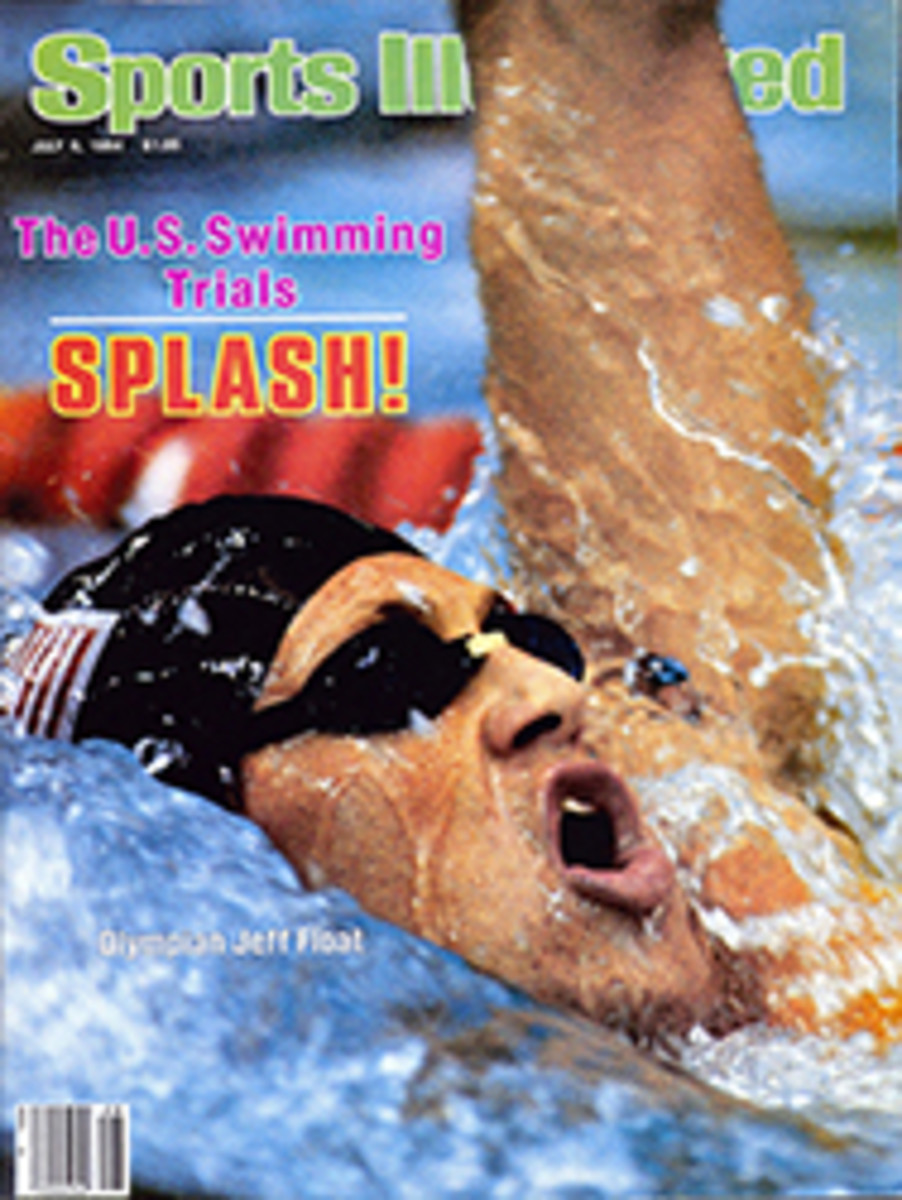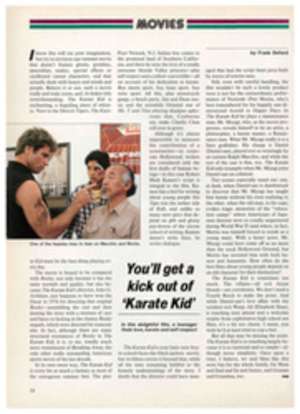
No rain on Mario's parade
Days before the first lap of the inaugural U.S. Grand Prix at the Meadowlands for Indy Cars, held Sunday over access roads and through parking lots of the New Jersey sports complex, John Frasco, chairman of Championship Auto Racing Teams (CART), the organization that staged the race, was talking as if he had a time machine in his garage, and had just seen the future—and liked it. He reckoned the race would some day be seen as the biggest event in motor racing history. It was his idea: Get close enough to New York to smell it. That's where the markets, spelled s-p-o-n-s-o-r-s, were. There was the Manhattan skyline, almost close enough to kiss. Never mind that race day was so damply overcast that all you could see were the cars on the Jersey Turnpike; Frasco could see through the fog in the sky, and there was a rainbow up there.
In 1983 he had invited Meadowlands executive Loris Smith to the Indy 500. Frasco thinks the words Smith spoke there might become as immortal as "Gentlemen, start your engines." Smith reportedly surveyed the 300,000 paying spectators stuffed into the Brickyard and said, "Damn, we've got to get in on this."
Even on this dank day, the Meadowlands GP drew 34,388 spectators, out of 38,200 tickets sold. It was a modest beginning—smashed by Indy 8-1, you might say—but given the weather and the fact that big-time racing hadn't been seen around metropolitan New York since 1937, it was enough to make everybody happy. And the teams were quite content with the $536,000 purse—a figure that, right off the bat, made Meadowlands the second-richest motor race on the CART schedule after Indy with its $2.5 million purse.
It was a nice little American-style success story all the way around. Mario Andretti, who emigrated from his native Italy in 1955, when he was 15, led every lap and won by 51.7 seconds in his British-built red Lola-Cosworth. That was precisely how he had won the season's first event at Long Beach in April, but this time the race behind him was thrilling in spite of his dominance. At the finish, 100 laps and 168 grueling miles from the green flag, most of the fragile cars had been banged and crunched and dented like stockers. Rick Mears, who drove Indy Cars for more than two years before he ever spun, spun three times. Shunts took drivers out of contention in bunches, among them Mears, Teo Fabi, Tom Sneva, Roberto Guerrero, Kevin Cogan, Derek Daly, Howdy Holmes and Josele Garza, and Mario's son Michael. It was generally agreed that this was the most challenging, exhausting—and best—of the seven street circuits in North America. The 1.68-mile course was tight, but not slow—a speed of 165 mph could be reached on one straight—which meant there was virtually no physical letup. For Mario it was love at first sight. He was fastest in practice and won the pole position at an average speed of 96.012 mph.
The Meadowlands is Roger Penske's backyard; the headquarters of Penske Corp. are in Parsippany, 20 miles up the road. The week before the race, Penske, in his role as team owner, brought out Al Unser Sr., his 1983 CART PPG World Series champion, who took about 20 laps, mostly for something to say to the press. "The course is great," was what he said. He added, "But I didn't care much for the oncoming traffic." Seems a lady in a pickup was trying to find the Meadowlands' horse track at the same time Unser was zooming around. Even so, A.J. Foyt, back in Texas, didn't like Al's and Penske's head start. Foyt called Penske's methods crooked. Penske called Foyt a crybaby. Even Andretti, who slips into Foyt-like grouses now and then, complained that it would now take him 20 laps to catch up to Penske. It took him about 20 feet.
Foyt came to the Meadowlands, but didn't stay very long. His car didn't arrive from Houston until late in Thursday's afternoon practice session—the driver of his transporter had actually taken time out to sleep five hours—and Foyt's team didn't have time to set it up properly. The four-time Indy 500 winner suffered the ignominy of being the slowest driver on the track in Friday's qualifying. A.J. was offered a starting spot anyhow but said, "If I can't earn it, I don't want it," and headed back to Houston.
By the 4 p.m. start—late in the day for network television's sake—the four inches of rain that had closed one airport and flooded New York roadways for almost two days had diminished to mists, and the teams had to make a risky choice between grooved rain tires or slicks. Psych games go on at such moments; no team wants to show its hand, so it waits until the last minute to mount tires. After Andretti, Bobby Rahal—the other front-row qualifier—and Fabi threw on their slicks, five cars pitted on the pace lap to do likewise.
Rahal tailed Andretti until Lap 40, when he spun and ticked the wall. The race for second was then between Geoff Brabham, Al Unser Jr., and Al Holbert—who would finish third, fourth and fifth—and Danny Sullivan, who took that position and held onto it.
Michael Andretti added the last-gasp thrill to the spin-filled race. Two laps from the end, while trying to pass Mears, he drove up Mears's left rear tire. "I could see the bottom of his car as he sailed over me," said Mears. It was ironic that, on Friday, Mario had said, "If you don't know for sure that the guy in front of you sees you in his mirrors, you just don't dare try to go between him and the wall, or you might end up in Teaneck." Michael stopped short of Teaneck, a town five miles from the course, but his car was flattened against the wall. Mario had said of Michael's racing, "It's a new experience for me. I've never worried about another driver before." When he passed the wreckage of his son's car, spectators could see Mario's head swivel and could share his relief that Michael had already climbed out.
The race clearly boosted the prestige of the Indy Cars, which are now taking on Formula 1 in the competition for "markets." Formula 1 seemed set to stage a world championship round this fall in Flushing Meadow in the New York City borough of Queens, but that got too complicated and is all but a dead issue now. In the last four years Indy Car purses have risen from $2 million a season to $10 million. There were 14 official sponsors of the Meadowlands Grand Prix. With a two-year pact there and a three-year option, Frasco, a 6'6" former basketball player at Loras College in Dubuque, Iowa, is satisfied he's touched the skyline.
TWO PHOTOS
Mario warmed up with rain tires, but then raced on slicks.

